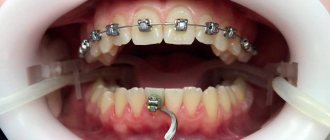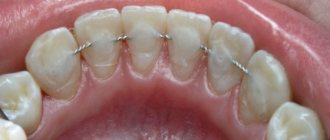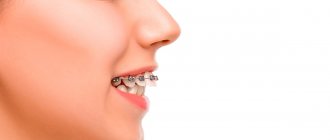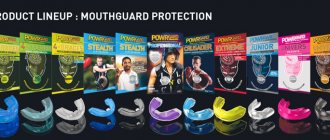This is a headache and a nightmare for any orthodontist: a patient who has had his braces removed and given a removable retainer and instructions for its use returns after some time with complaints about the curvature of his previously straight teeth. The retention period is the most psychologically difficult part of the treatment. Everything is already perfect, and then you have to wear a retainer. Yes, there are other reasons for the unsuccessful outcome of the correction. And although they are much less common, let’s talk about them in more detail.
Correction principle
The method of correcting malocclusion with braces is based on the principle of creating constant pressure on the teeth. Under pressure, the tooth root begins to press on the socket on one side, thereby causing rarefaction of the bone tissue. In the direction of rarefaction, the tooth moves. On the other side of the hole, bone tissue, on the contrary, grows. Thus, after a certain period of time, not only the position of the tooth changes, but also the shape of the socket, which prevents the tooth from returning to its original place.
Correct your bite or dental defect with invisible aligners Find out what it is
Bone tissue grows quite quickly, but it takes quite a long time to “ripen”. That is why, after finishing wearing the brace system, a removable retainer is made for the patient for another year or two or a splint is installed on the incisors and canines. Additional fixation during the retention period helps to avoid repeated tooth curvature.
Types of retainers
Depending on the characteristics of malocclusion and the degree of results achieved, the orthodontist determines the tactics of the retention period regarding the type of structure, the duration of daily exposure to retainers and the timing of their wearing.
There are two main types of retainers.
- Fixed. They are a thin wire that is fixed on the inside of the teeth using special glue or filling material. The retainer is absolutely invisible to prying eyes, does not cause significant discomfort and does not affect diction.
- Removable. Several types of removable retainers are produced, but the main design is presented in the form of a mouthguard, which is made exclusively individually in accordance with the anatomical features of the patient’s teeth and jaw. Removable retainers are worn primarily at night or for several hours a day.
Trainers, plates, mouthguards and aligners are used in the form of removable orthodontic products for the retention period.
A removable design requires longer adaptation and regular wearing of the structure. Orthodontists recommend that parents monitor compliance with the requirements for correction, and if there are indications for wearing a structure, they should always give preference to non-removable retainers.
Possible problems after removing braces
Some people's teeth diverge quickly after completing the correction stage. During the first year, some individuals may only slightly rotate around their axis. Everything is individual, but some general patterns can be identified.
Fanned teeth
A rapid relapse after braces are removed may be due to the following factors:
- Refusal of retainers. Patients often refuse permanent retainers because their installation damages tooth enamel. And it’s annoying to wear removable retainers, even those that are worn only at night. As a result, the teeth return to their previous position, since the new position has not yet been “overgrown” with bone tissue.
- Individual characteristics. There are people in whom new formation and “maturation” of bone tissue proceeds faster than others. And there are those for whom this process is delayed. For some, the displacement of teeth in order to correct the shape of the dentition was insignificant, while for others the tooth “came a long way” before taking its place in the dentition. Teeth quickly “huddle together” after crowding is eliminated. The teeth, which were mixed with braces around their axis, easily turn back.
- Breakage of braces, use of a system of inadequate quality. If the pressure on the teeth during correction was not constant, then the likelihood of an unfavorable outcome increases. You shouldn’t walk around with a broken arch or unstuck locks for a week. It is better to see a doctor on the same day. This will save you from many problems.
- Tooth extraction. When there is not enough space for teeth in the dentition, the orthodontist may decide to remove the “extra” ones. Most often these are fours, eights, less often sixes. The absence of fangs can cause the formation of a diastema. Removing a six causes significant displacement of adjacent teeth.
Loose teeth after braces
Occurs infrequently. In most cases, the feeling of excessive tooth mobility after removing braces is deceptive. It may appear at the very beginning of the retention period and disappear on its own and without treatment. It's another matter if the teeth are really loose. In this case, it is better to seek help from a specialist.
Pain in the teeth and gums
There may be some discomfort after removing braces. Pain occurs especially often after eating solid foods. The reason for this is a change in the condition of the ligaments that hold the roots of the teeth, as well as an increase in the sensitivity of the enamel if the remineralization procedure was not carried out. Reducing the chewing load and using special medications that reduce the sensitivity of teeth and gums help reduce pain.
In what cases is loose teeth not normal?
Rarely, there are situations when the cause of tooth loosening is not in the physiological process of resorption and growth of bone tissue, but in some kind of disease.
For example, teeth may become loose if a patient develops osteomyelitis or osteoporosis. Also a common cause of pathological loosening is periodontal disease in the acute stage. Teeth become mobile due to gingivitis, periodontal disease, and periodontitis.
And if bone pathologies arise on their own, then periodontal diseases are most often caused by insufficient hygienic oral care and braces.
In any case, to exclude pathology of the bones or gums, at the first sign of loose teeth, you should consult a dentist. The doctor will conduct a full diagnosis, determine why the teeth are loose and, depending on the results of the examination, prescribe treatment or give recommendations.
What to do if your teeth are crooked
If the curvature is too severe, braces will likely need to be reinstalled. If the defect is minor, you can get by with regular retainers. In any case, if the slightest changes are detected in the oral cavity, the patient should immediately seek advice from his doctor.
There are situations when, even after installing a mouth guard or wire, the teeth still move apart. This is due to incorrect position or an error in the manufacture of the model. But, unfortunately, most often this happens due to the fault of the patient at the dental clinic.
Tired of wearing bulky orthodontic appliances, a person feels freedom and stops monitoring the condition of his teeth. He may forget to wear a mouthguard, not pay due attention to oral hygiene, etc. All this can lead to complications: the appearance of caries, inflammation, as well as displacement of units to their usual position. It is very important to follow all the recommendations of the doctor, who, after dismantling the structure, will definitely prescribe the use of a specific retainer, toothpastes, strengthening compounds, brushes of optimal hardness, etc.
Signs of distal bite
Distal occlusion requires mandatory intervention from a specialist; treatment with braces is indicated; aligners can be used (especially when the diagnosis is made in childhood).
Signs of distal occlusion:
- The child spontaneously bites his lower lip
:
- The profile is slightly beveled. To define it, the term “avian” is used.
- The lips are thin and fall inside the oral cavity
. If you visually draw a line from the tip of the nose to the middle of the chin, then the lips will not appear on it:
- The lower third of the face is disproportionately small. A crease appears on the chin due to the jaw moving back.
It is possible to correct distal bite without braces when treatment is carried out in childhood. Aligners are approved for installation in children with baby teeth. They are installed in older preschool age, when the child can consciously follow the dentist’s recommendations.
In my practice, there are already more than 300 successful cases of bite correction using aligners. This is a promising method. Invisalign and FlexLiner aligners have proven themselves to be excellent in the treatment of distal occlusion. Star Smile aligners also correct this dental pathology quite well, although they require more careful attention from the attending physician. Whether correction of distal bite with aligners is right for you or your child can only be said with confidence during a consultation.
Reasons for the appearance of distal bite, why it is dangerous
The causes of the defect may be genetic disorders, especially in cases where relatives had a similar diagnosis.
Sometimes the occurrence of pathology is facilitated by a lack of nutrients, microelements, as well as bad habits.
– sucking toys, pacifiers.
Often, instead of a pacifier, the child uses a finger to suck
- which undoubtedly contributes to the development of distal occlusion:
The structure of the dental apparatus is disrupted in the presence of untreated diseases of the nasopharynx - breathing through the mouth provokes weakening of muscles, ligaments and jaws shift.
Correction of distal bite with braces is necessary. If you ignore pathology, you will have to overcome many problems.
Problems arising from distal occlusion:
- Diction is broken.
- There is no adequate chewing of food, not all foods are convenient to eat. Gastrointestinal ailments or somatic diseases develop.
- It is difficult to get dentures in the future.
- Uneven load often leads to loosening of units and destructive changes in tissues.
The dentist will make an initial conclusion during the first examination and order imaging to clarify the diagnosis.
The importance of using retainers after wearing braces and aligners
Braces and aligners correct teeth, and the patient does not need further medical supervision - a false statement.
Wearing braces lasts 1-2 years. Naturally, the patient is happy to have them removed and have an even row of teeth. To consolidate the effect, it is necessary to use retainers - metal arches that are attached to the lingual surface of the front teeth. They prevent secondary curvature of teeth. Retainers can be non-removable (metal arches) or removable (aligners). The former are prescribed to adults and adolescents, the latter are more often prescribed to children and adolescents. The doctor decides whether the mouthguard will be effective for an adult patient. Wearing a mouth guard requires discipline - wearing it at night will help straighten teeth stay in place.
Causes of tooth displacement
After orthodontic treatment is completed, teeth tend to return to their original position. The most common causes of dentition displacement are:
- patient's refusal to wear retainers,
- non-compliance with the rules of operation of the splinting structure,
- deformation or other damage to the retention system, as a result of which it loses its functions.
Another risk factor is the incorrect selection of a retention device. An experienced doctor should choose a design taking into account the structural features of the patient’s dental system. If this is not done, the retainer will not be able to cope with the high load, which will worsen the treatment result and will most likely lead to relapse.











